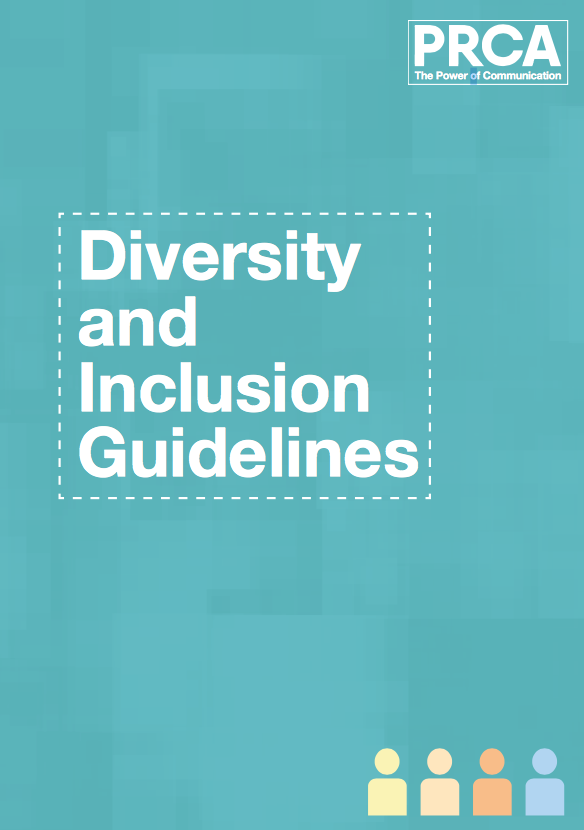PRCA launches Diversity and Inclusion Guidelines with cross-industry support
The Public Relations and Communications Association (PRCA) has launched its Diversity and Inclusion Guidelines, the latest step in its work to improve the diversity of the PR and communications industry.
The comprehensive guidelines examine the current state of diversity in the industry, outline the business case for improving diversity, and offer clear and manageable steps to making the workplace more diverse and inclusive. Click here to take a look at the guidelines.
The recommendations in the report range from offering flexible working practices and reforming recruitment practices to make them more fair and transparent, to offering paid and structured internships and apprenticeships and monitoring diversity metrics. It also offers steps on how organisations can manage their diverse workforce. The report features case studies from leading organisations in the industry such as Cicero Group, Dynamo PR, Forster Communications, Golin, and The Taylor Bennett Foundation.
Francis Ingham MPRCA, PRCA Director General, said: “I am delighted to announce the launch of the Diversity and Inclusion Guidelines. The consensus in the industry is that diversity must improve and today we are providing the industry with clear steps to make that change. Businesses must address diversity as a key priority for their business to grow and ultimately for the industry to grow. We cannot perform our roles as communicators if we are not representative of the UK’s changing demographics.
“These guidelines prove that there are organisations in the industry that are doing exceptional work in this area but there is a great deal more that we can do. Our hope is that the PRCA Diversity and Inclusion Guidelines will encourage organisations to take the first steps to improve diversity.”
Sarah Hall MPRCA, CIPR President 2018, said: “The PRCA’s work on diversity and inclusivity takes the industry another step forward. Our State of the Profession research highlights the need for this work and we look forward to collaborating to drive real change.”
Sarah Stimson, CEO, Taylor Bennett Foundation, said: “We were thrilled that Taylor Bennett Foundation was selected as the PRCA’s Charity of the Year and this report is indicative of its wider commitment to diversity across the industry in all forms. It covers the issues comprehensively and gives practical guidance on addressing diversity in the PR workforce. We welcome it wholeheartedly.”
Pema Seely CMPRCA, Chairman, PRCA Diversity Network, said: “Bright young people want to work in modern and inclusive environments. Simply put, people want to come to work knowing that they will learn and develop. For me, diversity is a key part of that, otherwise we will have the same people, with the same ideas, and ultimately the same results.
“If we want to attract and retain the very best talent, it’s something we need to address urgently. In 2017, the PR and Communications Council committed to increasing diversity within the industry. These guidelines are a direct response to that. They will support PR practitioners with the practical steps and guidance to develop a more diverse workforce.”
This launch follows a pledge by the PR and Communications Council to improve diversity within the industry. This pledge was inspired by statistics in the PR Census 2016, which revealed that the industry is 91% white and 83% British. In addition, 64% of the industry is made up of women but the gender pay gap in 2016 was £9,111 in favour of men. Only 2% of PR and communications practitioners consider themselves to have a disability. These statistics highlighted the need for a collaborative, industry-led approach to tackle the problem.
The PRCA has always been committed to improving diversity within the PR and communications industry. The launch of the PR and Communications Census 2018 later this year will be another defining moment for diversity.
If you would like to get involved in the PRCA’s work on diversity, please contact Neha.Khatwani@prca.org.uk.
For the original article, click here.




